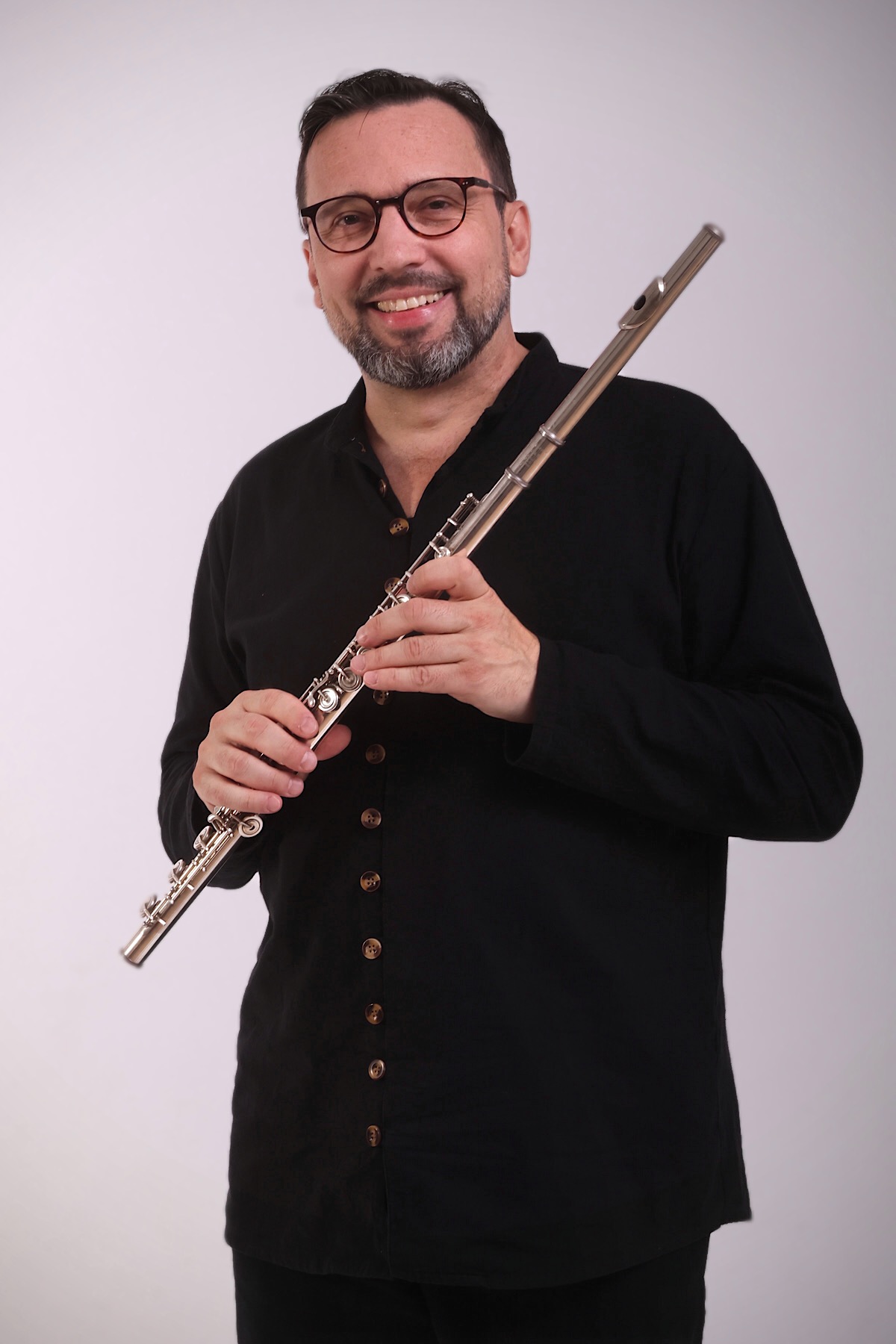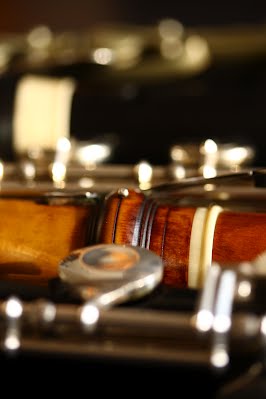
Querflöte lernen für Anfänger – ganz von null
Noch nie Flöte gespielt? Kein Problem. Bei meinem Querflötenunterricht als Anfänger:in können Sie ohne Vorkenntnisse starten – sogar auch ohne Notenlesen.
Wir beginnen mit Haltung, Atmung und den ersten Tönen, Schritt für Schritt, mit klaren, kurzen Übungen.
Viele fragen: „wie hält man die Querflöte?”, „wie bläst man richtig hinein?”, „welche Griffe (Grifftabelle) brauche ich?” – genau damit fangen wir an, und lernen wir in Ruhe.
Buchen Sie eine unverbindliche Probestunde und finden Sie heraus, ob mein Unterricht zu Ihnen passt. »
Learn the flute for beginners – completely from scratch
Never played the flute before? No problem. In my flute lessons for beginners, you can start without any prior experience – even without reading music.
We begin with posture, breathing, and your first tones, step by step, with short and clear exercises.
Many people ask: “How do you hold the flute?”, “How do you blow correctly?”, “Which fingerings do I need?” – that’s exactly where we start, calmly and patiently.

ist die Querflöte schwer?
Die Flöte ist erstaunlich natürlich erlernbar, weil sie direkt mit unserer Atmung verbunden ist.
(Und ja – sagt man scherzhaft – hält man sie aus dem Autofenster, klingt sie auch. Aber wir machen das schöner! ;)
Mit einem entspannten und richtigen Mundhaltung (Ansatz) und guter Luftführung entsteht ein tragender Ton – vom Piano bis zum strahlenden Forte.
Querflöte lernen können Sie in jedem Alter –
auch über 60 »
– anfangen. Die beste Zeit den Querflötenunterricht anzufangen ist: jetzt.
Is the flute difficult?
The flute is surprisingly natural to learn because it is directly connected to our breathing.
(And yes – people joke that if you hold it out of a car window, it will make a sound. But we’ll make it sound much better! ;)
With a relaxed and correct embouchure and good airflow, you’ll produce a clear tone – from a soft piano to a bright forte.
You can start learning the flute at any age –
even over 60 ».
The best time to begin flute lessons is: right now.
Ohne Notenlesen starten – hörend lernen
Sie können ohne Notenkenntnisse beginnen. Wir arbeiten zuerst mit Gehör, einfachen Patterns und Mini-Melodien.
Parallel der Querflöte bauen wir für absolute Anfänger das Notenlesen in kleinen Schritten auf – so bleibt es leicht.
Für Tutorials-Interessierte: Haltung, Mund-Ansatz, Luftstütze, erste Griffe, erste Melodie – alles strukturiert erklärt.
Mehr üben spezielle kurse für Erwachsene - auch Anfänger:innen »
Start without reading music – learn by ear
You can begin without knowing how to read music.
We first work by ear, with simple patterns and short melodies.
At the same time, we gradually build up reading notation for absolute beginners – keeping it light and easy.
For those who enjoy a tutorial-style approach: posture, embouchure, breath support, first fingerings, and first melodies are all clearly explained.
Learn more about special courses for adults – including beginners »
Erste Erfolge schnell hören – klare, kurze Übungen
Sie bekommen kurze Übepläne mit hörbarem Fortschritt nach jeder Stunde.
Wir kombinieren Technik (Atem, Ansatz, Finger) mit Musik (kleine Songs, leichte Etüden).
Auf Wunsch schauen wir auch in Improvisation oder kleine Pop-/Jazz-Grooves – spielerisch und anfängerfreundlich.
Improvisation / Jazz » Wenn sie nach Querflötenunterricht für Anfänger in Wien suchen – hier sind sie richtig.
Probieren Sie eine unverbindliche Probestunde gleich in den nächsten Tagen aus! »
Hear your first progress fast – short, focused exercises
You’ll receive short practice plans with audible progress after each lesson.
We combine technique (breathing, embouchure, fingers) with music (small songs, light studies).
If you wish, we can also explore improvisation or light pop and jazz grooves – playful and beginner-friendly.
Improvisation / Jazz »
If you’re looking for flute lessons for beginners in Vienna – you’re in the right place.
FAQ für Anfänger – schnelle Antworten
Wie hält man die Querflöte? – Locker, ergonomisch, mit stabiler linker Zeigefinger- und rechter Daumen- und Kleinfingerstütze.
Wie bläst man richtig? – Ruhiger Luftstrom, kleiner, fokussierter Ansatz; wir finden Ihre natürliche Position.
Welche Griffe brauche ich zuerst? – Die Grundtöne der ersten Oktave (bis auf die tiefsten); Sie bekommen eine einfache Griffübersicht.
Wie schnell kann ich eine Melodie spielen? – Oft schon in der ersten oder zweiten Stunde – ganz ohne Druck.
FAQ for beginners – quick answers
How do you hold the flute? – Relaxed, ergonomic, with a stable right-thumb support.
How do you blow correctly? – With a calm airflow and a small, focused embouchure; we’ll find your natural position.
Which fingerings do you learn first? – The basic notes of the first octave (except the lowest ones); you’ll get a simple fingering chart.
How soon can you play a melody? – Often within the first or second lesson – completely without pressure.
Für wen ist dieser Kurs?
Für absolute Anfänger:innen („noch nie Flöte in der Hand gehabt”),
für alle ohne Notenkenntnisse, und für Erwachsene, die „endlich etwas Neues beginnen” möchten.
Wenn Sie nach „Querflöte lernen für Anfänger”, „Flöte spielen lernen ohne Noten”, „Flöte Haltung/Ansatz/Fingerings” suchen – hier sind Sie richtig.
Jetzt Kontakt aufnehmen »
Who is this course for?
For absolute beginners (“never held a flute”),
for anyone with no knowledge of reading music,
and for adults who want to finally start something new.
If you’re searching for “learn flute for beginners”, “play flute without reading music”, or “flute posture / embouchure / fingerings” – you’re in the right place.
Get in touch now »
|